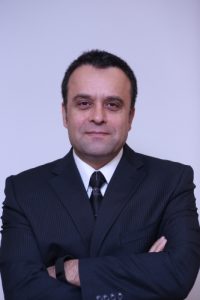
Norman Apsley and Mahmoda Ali
Title: Leaders in Innovation Fellowships-building and sustaining a global network of engineering entrepreneurs
Biography
Norman Apsley
Norman has a passion for putting academic science and engineering to work, in new products and services.
After some twenty years at what is now known as QinetiQ Malvern, where he developed a reputation for successfully working with universities and industry and for commercialising and diversifying of government research, he became in 2000, the first Chief Executive of the Northern Ireland Science Park Foundation Limited (now known as Catalyst). This project was one of the major economic initiatives established in NI after the Good Friday Agreement. The project led the way, showing that Government, local and national, Academe (Queens University, Belfast (QUB), University of Ulster (UU) and Belfast Metropolitan College (BMC)) and the Private Sector could work together to achieve a vibrant Knowledge Economy for the city of Belfast and for the country as a whole.
Norman was elected to the Royal and Irish Academies of Engineering and awarded the OBE in the Queen’s Birthday Honours in 2012 for services to science and the economy. He is Chair of the Steering group for the Leaders in Innovation Fellowships.
 Mahmoda Ali
Mahmoda Ali
Mahmoda is an innovation and entrepreneurship enthusiast and specialist. Since joining the Royal Academy of Engineering in 2015, Mahmoda has shaped the Leaders in Innovation Fellowship programme into the UK Newton Fund’s flagship innovation and entrepreneurship programme, now operating at scale across 17 emerging economies with an active community of over 900 alumni, raising over $100 million dollars of funding for innovations that are tackling the UN’s Sustainable Development Goals. Mahmoda has a diverse background that spans both innovation, management and marketing. She was formerly designing and implementing global Challenge Prizes at Nesta, the UK’s innovation foundation and InnoCentive, the global pioneer in crowdsourced innovation. She has worked with organisations such as the European Commission, UNDP, Thales, BAE systems, The Cabinet Office, The US Department of State on addressing pressing global development challenges.
Abstract
Supported by the UK Government and partners in 16 countries throughout the world, including the Ministry of Science and Technology in Vietnam, the Leaders in Innovation Fellowships (LIF) program aims to build the entrepreneurial capacity of researchers to commercialize innovations aimed at addressing social and economic challenges in country; a secondary objective is to promote improved understanding of and attitudes towards entrepreneurship within the research sector.
The talk will describe the processes used in this prestigious innovation program and summarize the successes and challenges to date from the perspective of both curators and participants, as we begin to select the sixth annual cohort to undertake the intensive training and personal development.
Our intention in the talk is two-fold: not only to bring the program to the attention of more potential LIF applicants and partners but also to open a debate as to how best to help this set of enthusiastic entrepreneurial engineers into an effective force for the ultimate aim of the program:
- To tackle some of the world’s biggest challenges and to build commercialization capacity to transfer new research into real world applications
- Connect, sustain and instigate collaboration between all LIF partner country’s entrepreneurial individuals working in similar sectors across geographies, to promote the success and so to create
- Increased flows of innovation and revenue along the improving value- and supply-chains among the partner countries.
 Prof. Tolga M. Duman
Prof. Tolga M. Duman
Title: Physical Layer Security: Bridging the Gap Between Theory and Practice
Biography
Tolga M. Duman is a Professor of Electrical and Electronics Engineering Department at Bilkent University in Turkey. He received the B.S. degree from the same university in 1993, M.S. and Ph.D. degrees from Northeastern University, Boston, MA, in 1995 and 1998, respectively, all in electrical engineering. Prior to joining Bilkent University in September 2012, he has been a Professor with the Electrical Engineering Department of Arizona State University for about fifteen years. Dr. Duman’s current research interests are in systems, with particular focus on communications and signal processing, including wireless and mobile communications, coding/modulation, coding for wireless communications, data storage systems and underwater acoustic communications.
Dr. Duman is a Fellow of IEEE, a recipient of the National Science Foundation CAREER Award and IEEE Third Millennium medal. He has served as an editor for various journals and took part in many conference organization activities. He is currently the coding and information theory area editor of IEEE Trans. on Communications and the Editor-in-Chief of Elsevier’s Physical Communication, and he is the TPC co-chair of IEEE PIMRC 2019.
Abstract
Providing secure communications over the physical layer with the objective of achieving secrecy without requiring a secret key has been receiving growing attention within the past decade. The majority of the existing studies in this area are from an information theoretical perspective. In this talk, we review the recent advances on physical layer security for use in wireless communication systems with a particular focus on its practical aspects. Specifically, we explore transmission techniques that use finite alphabet signaling as opposed to Gaussian inputs (which are not realizable). We explore transmit signal design algorithms for single-antenna as well as multi-antenna wiretap channels under different assumptions on the channel state information at the transmitter. Moreover, we present a review of the recent results on secure transmission with discrete signaling for various scenarios including multi-carrier transmission systems, broadcast channels with confidential messages, cognitive multiple access and relay networks. We also present an overview of practical code construction approaches for physical layer security and discuss related open problems. Finally, we go over promising future research directions both on physical layer security and other related areas that are gaining importance including data privacy.

